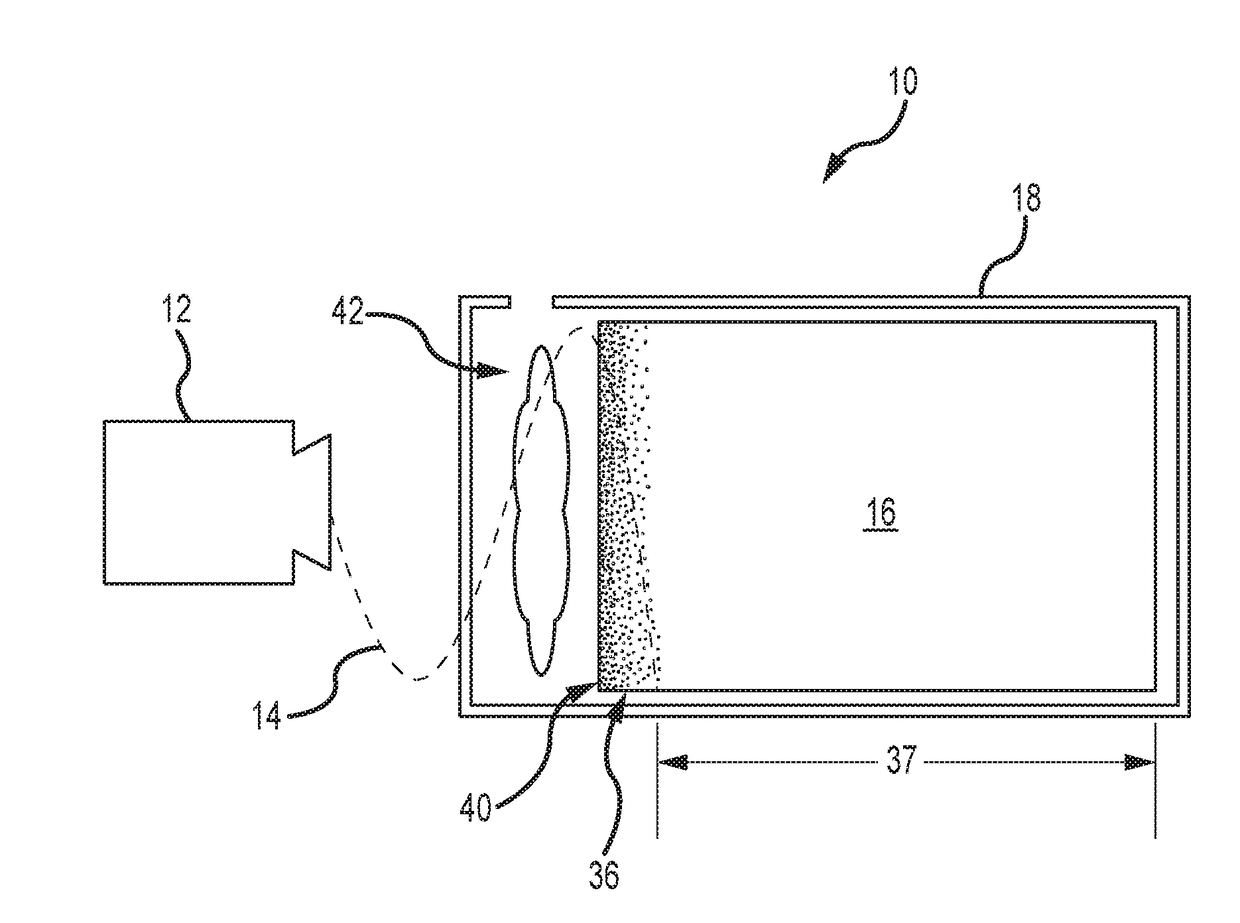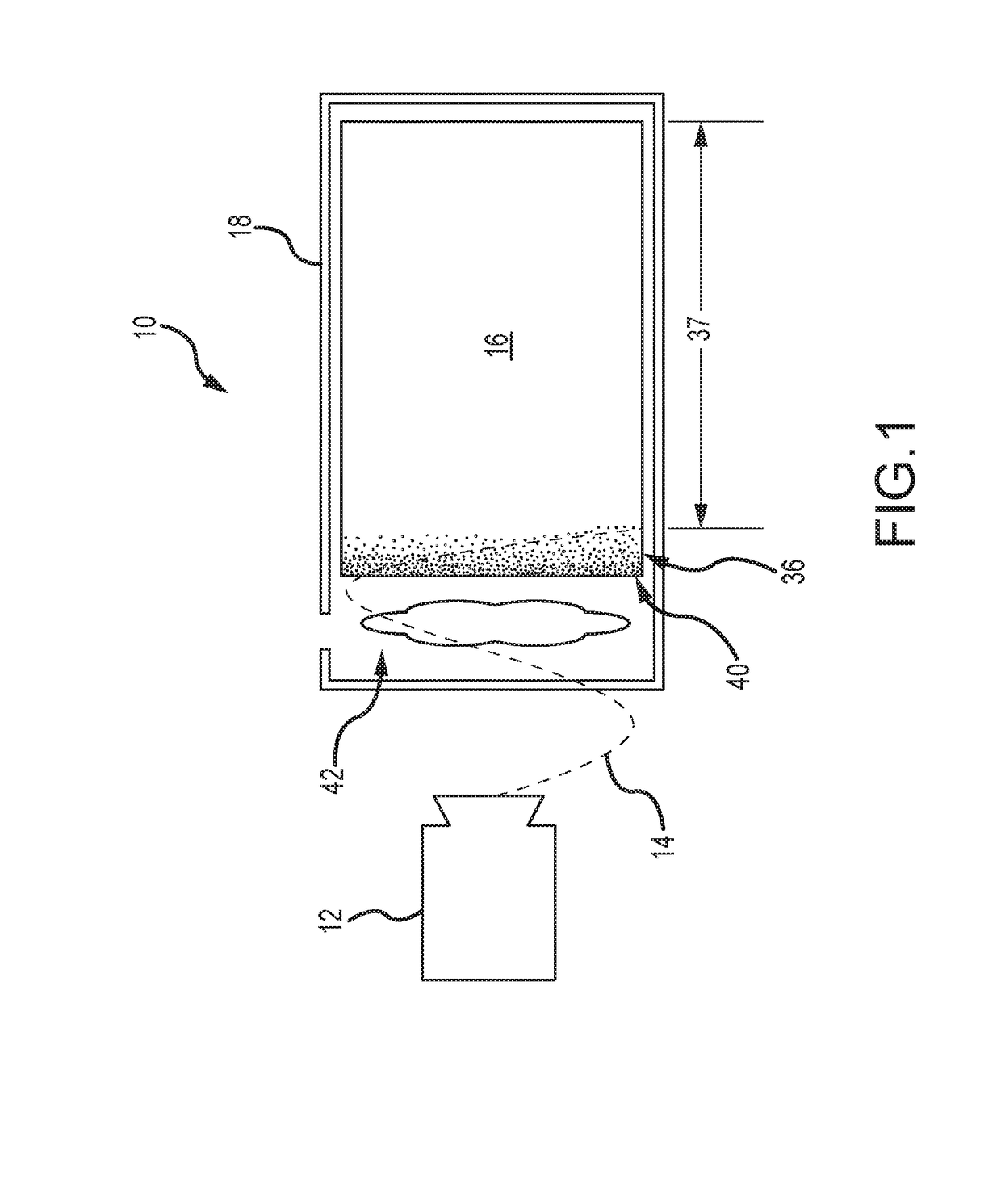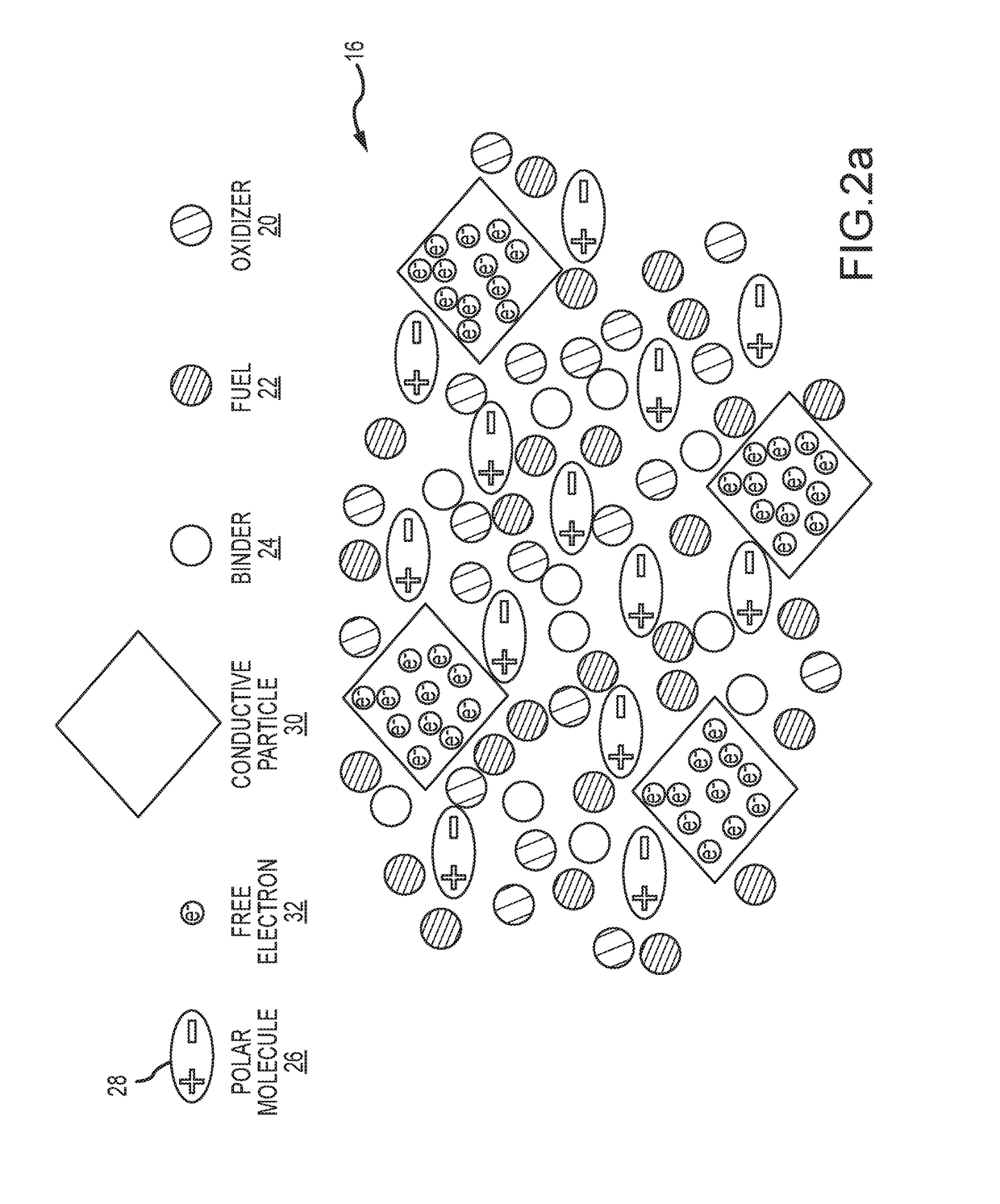Microwave ignition of electrically operated propellants
a technology of electrically operated propellants and microwave energy, which is applied in the direction of rocket engine plants, machines/engines, explosions, etc., can solve the problems of substantially all the propellant, the srm propellant cannot be “turned off” and “burned back”, and achieve the effect of efficient couplement of microwave energy
- Summary
- Abstract
- Description
- Claims
- Application Information
AI Technical Summary
Benefits of technology
Problems solved by technology
Method used
Image
Examples
Embodiment Construction
[0028]The present invention provides for microwave ignition of electrically operated propellant. Microwave ignition overcomes the issue of “burn back” exhibited by various electrode configurations. Microwave ignition is scalable to combust greater propellant mass to support larger gas generation systems.
[0029]Referring now to FIGS. 1, 2a and 2b, a gas generation system 10 includes a source 12 (e.g. a magnetron) configured to generate microwave energy 14 in a defined microwave band between 0.3 GHz and 300 GHz, a mass of electrically operated propellant 16 and a combustion chamber 18. Typically, the walls of the chamber around the mass of propellant are impermeable to the microwave energy and the far wall opposite the mass is permeable to the microwave energy. The microwave band is generally a narrow band above a center frequency Fc. The band is typically at most + / −10% of Fc and more typically + / −5% of Fc. In certain embodiments, Fc lies between 1 and 10 GHz.
[0030]The electrically op...
PUM
| Property | Measurement | Unit |
|---|---|---|
| center frequency | aaaaa | aaaaa |
| center frequency | aaaaa | aaaaa |
| center frequency | aaaaa | aaaaa |
Abstract
Description
Claims
Application Information
 Login to View More
Login to View More - R&D
- Intellectual Property
- Life Sciences
- Materials
- Tech Scout
- Unparalleled Data Quality
- Higher Quality Content
- 60% Fewer Hallucinations
Browse by: Latest US Patents, China's latest patents, Technical Efficacy Thesaurus, Application Domain, Technology Topic, Popular Technical Reports.
© 2025 PatSnap. All rights reserved.Legal|Privacy policy|Modern Slavery Act Transparency Statement|Sitemap|About US| Contact US: help@patsnap.com



